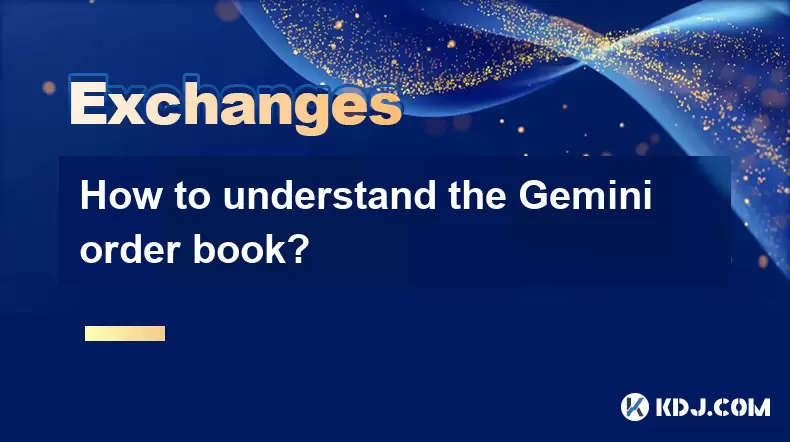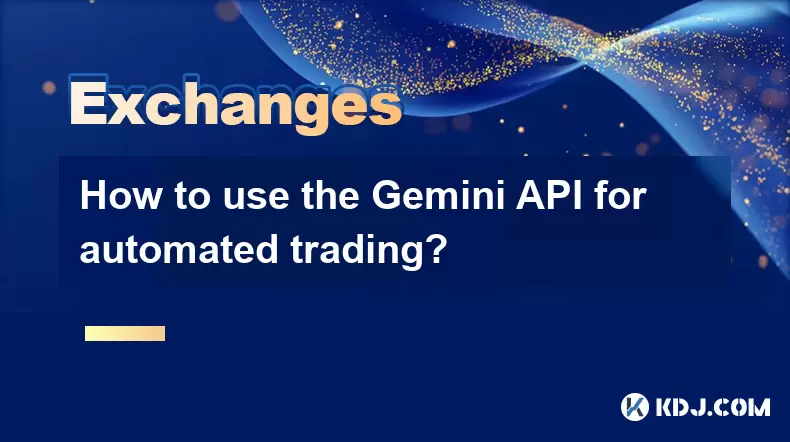-
 Bitcoin
Bitcoin $114400
1.32% -
 Ethereum
Ethereum $3499
2.20% -
 XRP
XRP $2.922
4.26% -
 Tether USDt
Tether USDt $0.0000
0.03% -
 BNB
BNB $752.6
1.53% -
 Solana
Solana $161.8
1.64% -
 USDC
USDC $0.9999
0.01% -
 TRON
TRON $0.3267
1.32% -
 Dogecoin
Dogecoin $0.1991
3.02% -
 Cardano
Cardano $0.7251
3.29% -
 Hyperliquid
Hyperliquid $38.32
3.36% -
 Stellar
Stellar $0.3972
7.58% -
 Sui
Sui $3.437
2.74% -
 Chainlink
Chainlink $16.29
3.65% -
 Bitcoin Cash
Bitcoin Cash $545.3
3.70% -
 Hedera
Hedera $0.2482
7.49% -
 Ethena USDe
Ethena USDe $1.001
0.03% -
 Avalanche
Avalanche $21.40
2.02% -
 Toncoin
Toncoin $3.579
1.56% -
 Litecoin
Litecoin $109.3
2.20% -
 UNUS SED LEO
UNUS SED LEO $8.951
-0.18% -
 Shiba Inu
Shiba Inu $0.00001220
2.75% -
 Polkadot
Polkadot $3.613
2.99% -
 Uniswap
Uniswap $9.173
3.78% -
 Monero
Monero $302.6
2.62% -
 Dai
Dai $0.0000
0.00% -
 Bitget Token
Bitget Token $4.320
1.52% -
 Pepe
Pepe $0.00001048
3.40% -
 Cronos
Cronos $0.1314
4.33% -
 Aave
Aave $259.4
3.54%
How to use leverage in Deepcoin
Leverage trading on Deepcoin offers opportunities for profit amplification, but traders must be cognizant of the risks and employ prudent risk management strategies.
Nov 23, 2024 at 03:55 am

How to Utilize Leverage Trading on Deepcoin
Introduction
Leverage trading is a common practice in the world of cryptocurrency trading, whereby traders employ borrowed funds to augment their positions and potentially amplify profits. Deepcoin, a reputable cryptocurrency exchange, offers various leverage options to enable traders to maximize returns. This comprehensive guide delves into the intricacies of leverage trading on Deepcoin, encompassing essential steps, strategies, and potential pitfalls.
Step 1: Register and Fund Your Deepcoin Account
- Register for a Deepcoin account by providing personal information, verifying identity, and setting up two-factor authentication.
- Fund your account using supported fiat currencies or cryptocurrencies through various payment methods, including wire transfers, debit/credit cards, or other crypto-exchange withdrawals.
Step 2: Select a Trading Pair and Leverage Amount
- Navigate to the "Exchange" section and choose the desired trading pair from the available options.
- Select the "Margin" trading mode and adjust the leverage multiplier according to risk tolerance and market conditions. Higher leverage implies greater potential returns but also heightened risk.
Step 3: Open a Trade and Manage Exposure
- Determine the position size (amount of the base currency to trade) and the order type (limit, market, or stop-loss).
- Monitor the position closely to determine whether to adjust leverage or take profit/loss. Deepcoin offers sophisticated charting tools and risk management features.
Step 4: Close the Trade and Repay Loan
- Exit the trade by executing an opposite position, resulting in a neutral position.
- Repay the borrowed funds with interest to close the margin loan. The interest rate is determined by the leverage amount and market conditions.
Additional Considerations for Leverage Trading
1. Risk Assessment and Management
- Thoroughly assess the risks associated with leverage trading, including potential losses that can exceed the initial investment.
- Utilize appropriate risk management techniques, such as stop-loss orders, position sizing, and hedging strategies.
2. Understanding Funding Rates
- Deepcoin applies funding rates to maintain the balance between borrowed and lent funds. Positive funding rates indicate a greater demand to borrow, favoring lenders. Negative funding rates indicate higher borrowing availability, benefiting borrowers.
3. Margin Call Avoidance
- Monitor the margin level to prevent a margin call, which occurs when the equity in the margin account falls below a predetermined threshold. Deepcoin provides auto-deleveraging mechanisms to mitigate risks during extreme price fluctuations.
4. Trading Psychology
- Maintain a disciplined approach to trading, avoiding emotional decision-making or overtrading. Leverage trading amplifies both profits and losses, requiring traders to stay calm under pressure and adhere to their trading plans.
Conclusion
Leverage trading on Deepcoin provides traders with the opportunity to magnify profits and explore advanced trading strategies. However, it is imperative to fully comprehend the associated risks and implement appropriate risk management measures to safeguard against potential losses. By diligently following these steps and understanding the nuances of leverage trading, traders can harness its potential benefits while navigating the inherent risks.
Disclaimer:info@kdj.com
The information provided is not trading advice. kdj.com does not assume any responsibility for any investments made based on the information provided in this article. Cryptocurrencies are highly volatile and it is highly recommended that you invest with caution after thorough research!
If you believe that the content used on this website infringes your copyright, please contact us immediately (info@kdj.com) and we will delete it promptly.
- Cold Wallet vs. MetaMask: A Web3 Wallet Revolution?
- 2025-08-04 06:30:12
- Chainlink Price Prediction: Bearish Continuation or a Bullish Reversal?
- 2025-08-04 06:35:12
- Bitcoin Whale Alert: Navigating Liquidation Risks in a Volatile Market
- 2025-08-04 07:10:12
- BNB Price Under Pressure: Navigating the Bearish Trend and Market Sentiment
- 2025-08-04 07:15:12
- Bitcoin Price Wobbles: Options Analysis Points to Bullish Undercurrent Despite Dip
- 2025-08-04 04:30:12
- Ark Invest, Coinbase, and Bitcoin: Decoding the Crypto Investment Landscape in NYC
- 2025-08-04 04:30:12
Related knowledge

How to set and manage alerts on the Gemini app?
Aug 03,2025 at 11:00am
Understanding the Gemini App Alert SystemThe Gemini app offers users a powerful way to stay informed about their cryptocurrency holdings, price moveme...

What to do if you forgot your Gemini password?
Aug 04,2025 at 03:42am
Understanding the Role of Passwords in Gemini AccountsWhen using Gemini, a regulated cryptocurrency exchange platform, your password serves as one of ...

What are the websocket feeds available from the Gemini API?
Aug 03,2025 at 07:43pm
Overview of Gemini WebSocket FeedsThe Gemini API provides real-time market data through its WebSocket feeds, enabling developers and traders to receiv...

How to manage your portfolio on Gemini?
Aug 03,2025 at 10:36am
Accessing Your Gemini Portfolio DashboardTo begin managing your portfolio on Gemini, you must first log in to your account through the official websit...

How to understand the Gemini order book?
Aug 02,2025 at 03:35pm
What Is the Gemini Order Book?The Gemini order book is a real-time ledger that displays all open buy and sell orders for a specific cryptocurrency tra...

How to use the Gemini API for automated trading?
Aug 04,2025 at 02:08am
Understanding the Gemini API and Its Role in Automated TradingThe Gemini API is a powerful tool that enables developers and traders to interact progra...

How to set and manage alerts on the Gemini app?
Aug 03,2025 at 11:00am
Understanding the Gemini App Alert SystemThe Gemini app offers users a powerful way to stay informed about their cryptocurrency holdings, price moveme...

What to do if you forgot your Gemini password?
Aug 04,2025 at 03:42am
Understanding the Role of Passwords in Gemini AccountsWhen using Gemini, a regulated cryptocurrency exchange platform, your password serves as one of ...

What are the websocket feeds available from the Gemini API?
Aug 03,2025 at 07:43pm
Overview of Gemini WebSocket FeedsThe Gemini API provides real-time market data through its WebSocket feeds, enabling developers and traders to receiv...

How to manage your portfolio on Gemini?
Aug 03,2025 at 10:36am
Accessing Your Gemini Portfolio DashboardTo begin managing your portfolio on Gemini, you must first log in to your account through the official websit...

How to understand the Gemini order book?
Aug 02,2025 at 03:35pm
What Is the Gemini Order Book?The Gemini order book is a real-time ledger that displays all open buy and sell orders for a specific cryptocurrency tra...

How to use the Gemini API for automated trading?
Aug 04,2025 at 02:08am
Understanding the Gemini API and Its Role in Automated TradingThe Gemini API is a powerful tool that enables developers and traders to interact progra...
See all articles

























































































